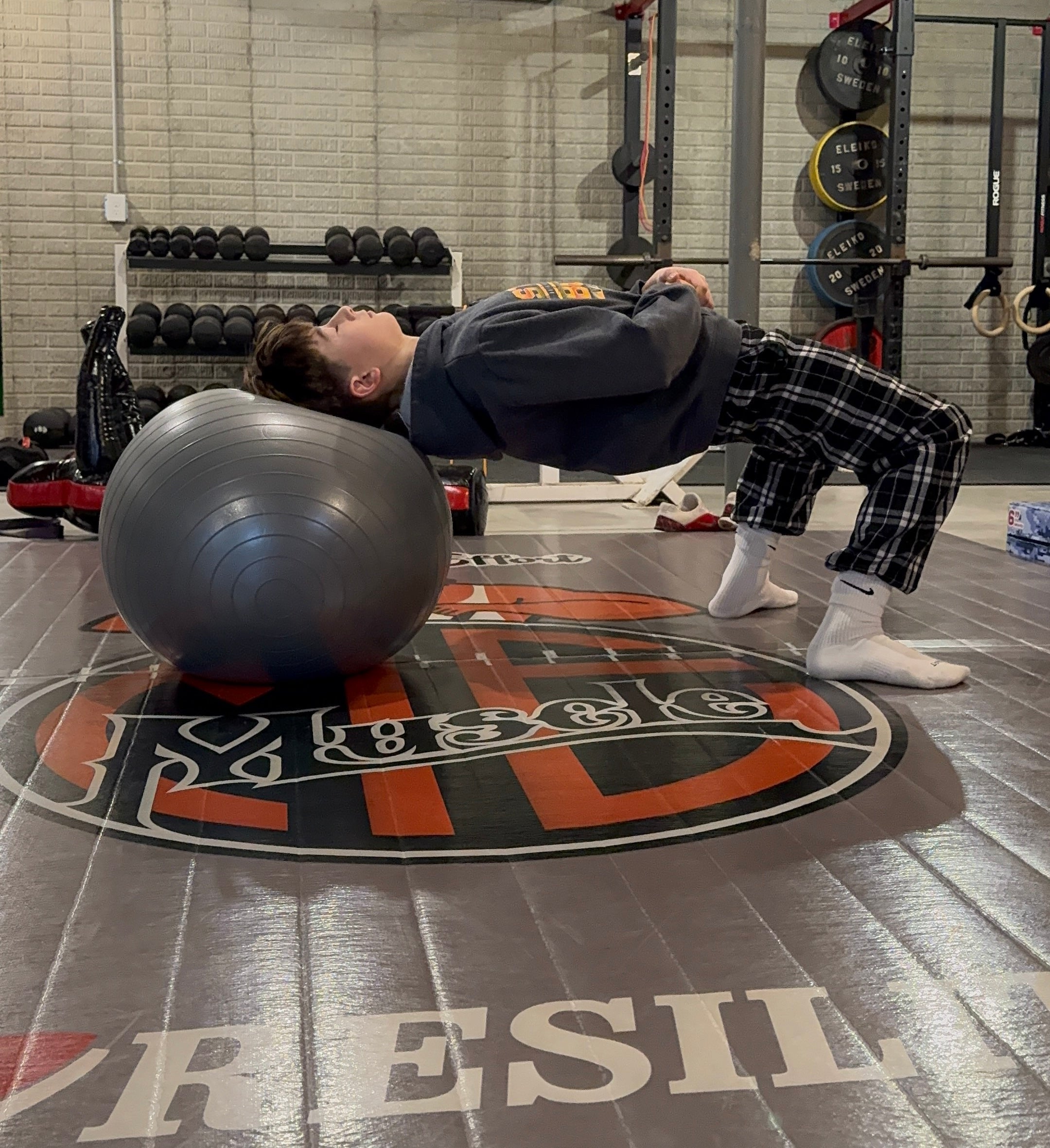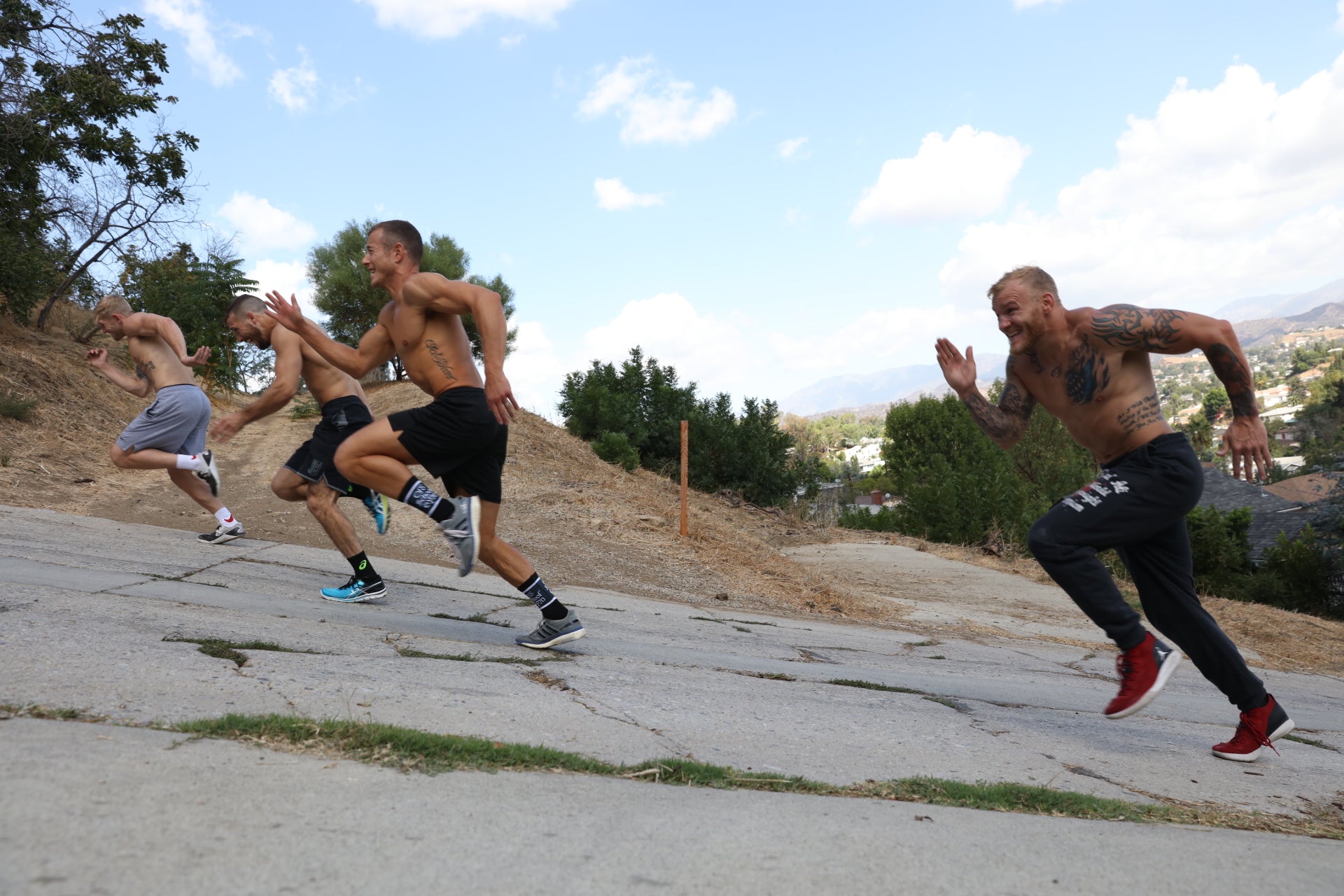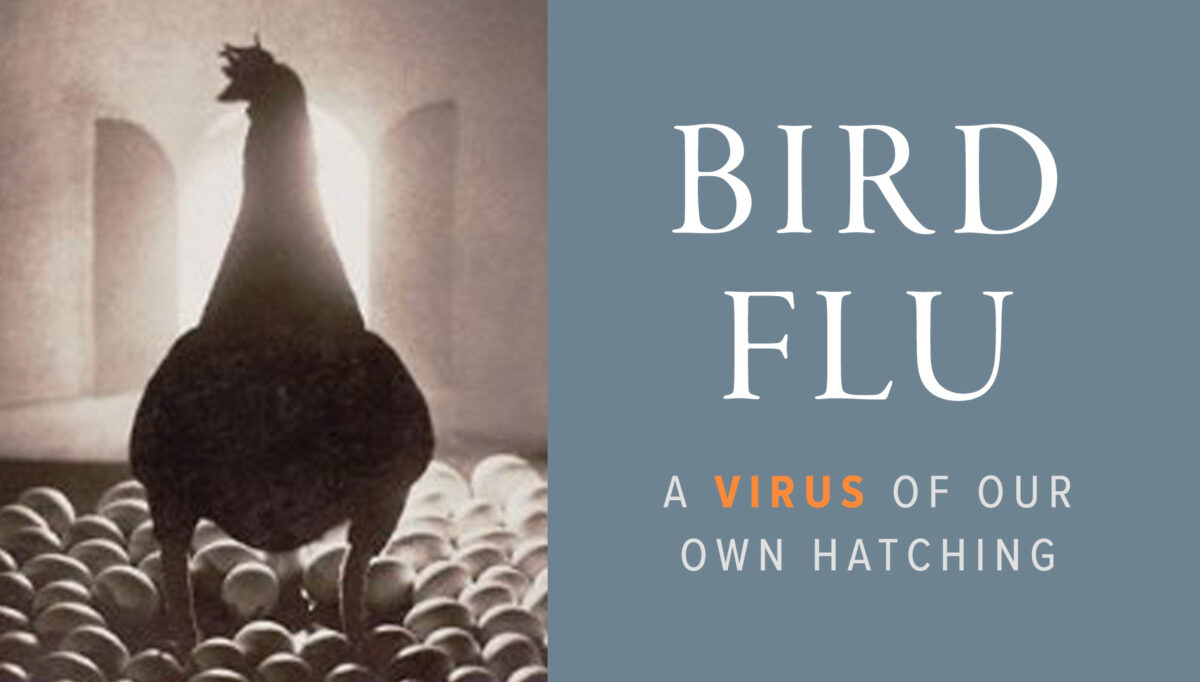Suffering from aches and pains to the lower back is very common and stats show it negatively affects a staggering 26% of adults in the United States alone. It’s more likely to happen as you get older, but low back pain can also be caused by injury or simply from spending too long sitting.
One of the key ways of addressing this problem is by strengthening the muscles of your back, and the easiest way of doing so is by incorporating lower back exercises with a little resistance.
There are a few different forms of resistance training and in this post we’ll show you how you can increase lean muscle mass, boost your back strength and rid yourself of annoying twinges and discomfort using a pair of dumbbells.
Before we dive into the exercises, let look into the anatomy of your lower back muscles.
The Anatomy of Your Lower Back
Your lower back is a complex network of muscles that work together to keep you stable, supported, and keep your body moving.
To get the most out of your workouts, it’s useful to know about the anatomy of your back. That way, you can target the right muscles and improve your overall strength and stability.
Erector Spinae
This group of muscles runs vertically along either side of the vertebral column, from the neck to the sacrum. The erector spinae muscles are responsible for extending the spine and helping to maintain an upright posture.
Low Latissimus Dorsi
The entire latissimus dorsi is the broadest muscle of the back with the lower back portion being responsible for adduction, extension, and medial rotation of the humerus. Dumbbell back exercises can increase strength and thickness to this large muscle.
Quadratus Lumborum
Located on either side of the spine, just above the hips, the quadratus lumborum muscles help to stabilize the pelvis and lower spine during movements such as bending or twisting.
Gluteus Maximus
The gluteus maximus isn’t technically part of the lower back. However, it’s an important muscle group that helps to support the lower back and stabilize the hips during movements like lifting and squatting.
Multifidus
These small, deep muscles run along the spine and help to stabilize the vertebrae during movement. There are several different multifidus muscle exercises you can do to strengthen this muscle group.
Psoas Major
This muscle, located deep in the abdomen, runs from the lower spine to the femur. The psoas major is responsible for flexing the hip joint and helping to stabilize the lower back during activities such as walking and running.
Why Lower Back Dumbbell Exercises Are Important?
Lower back strengthening exercises can offer a host of benefits and even help with activities you undertake as part of everyday life.
Below are a few reasons why it’s worth spending a bit of time and effort on building up these important muscles.
You Can Improve Your Posture
Around 80% of workers spend between 4 and 9 hours sitting. Many of these people sit hunched over, rounding their lower back and over time this can result in low back pain and a weakness in the upper traps.
Your lower back muscles are responsible for helping you maintain good posture, which can prevent back pain and other issues. So, by strengthening these muscles, you can improve your overall posture and alignment.
You’ll Have Better Spinal Stability
Keeping your spinal column and pelvis stable is really important if you want to rid yourself of backache once and for all. By focusing your efforts on adding some muscle and strength, you’ll not only improve lower body stability, but you can minimise any risk of injuries which can contribute to back problems.
You Can Help To Prevent Future Injuries
Weak lower back muscles can leave you more susceptible to injuries, especially when lifting heavy objects or performing other physical activities like gardening or working out in the gym. By strengthening your lower back muscles, you can reduce your risk of injury and improve your overall fitness.
10 Effective Lower Back Dumbbell Exercises
Now you know a little more about why such exercises are important to maintaining a strong and healthy back let’s get into the workouts themselves.
From beginner-friendly moves to advanced variations, these exercises are perfect for anyone looking to build a stronger, more resilient lower back.
If you have any pre-existing medical issues that could be impacted by exercise, it’s important to consult with a medical professional prior to any form of strength training.
1. Dumbbell Deadlifts
The dumbbell deadlift is a variation on the regular barbell deadlift and targets your lower back muscles, glutes, and hamstrings.
Dumbbell deadlifts are suitable for all levels, but they’re an especially great way for beginners to get the hang of the form and movement pattern of a deadlift.
Here’s How To Perform A Dumbbell Deadlift:
- Stand with your feet shoulder-width apart with toes pointing out slightly.
- Bend your knees slightly and hinge at your hips so that you push your glutes back lowering towards the ground.
- Grab hold of the dumbbells and ensure your back is straight with head and chest up.
- Push through your heels and push your hips forward to return to a standing position.
- Make sure you lock out the hips at the top of the movement.
- Lower the dumbbells back to the ground ensuring that your head and chest remain up.
- Repeat for the desired number of reps.
2. Single Leg Romanian Deadlift
The single-leg Romanian deadlift, often abbreviated to the single leg RDL, is a unilateral variation of the traditional deadlift. This dynamic exercise targets your lower back, glutes, stabiliser muscles and hamstrings.
As it requires perfect balance, coordination, and good movement patterns, this exercise is suitable for intermediate to advanced lifters. As you perform this exercise one side at a time it’s a great way of addressing muscle and strength imbalances.
Here’s How To Perform Single-Leg Romanian Deadlift:
- Start by standing with your feet hip width apart with a dumbbell in each hand.
- Lift one foot off of the ground, bring your knee up in front of you until it’s at a 90-degree angle. This is your starting position.
- From here, hinge forwards at the hips whilst maintaining a neutral spine.
- As your upper body drops forward your raised leg should be extending behind you.
- When your upper body is parallel to the ground, your extended leg should now be out straight behind your so that you form a straight line.
- Pause briefly before raising the upper body back up along with your extended leg.
- Repeat for reps before switching to the other leg.
3. Standing Bent Over Dumbbell Rows
The standing dumbbell row will target your lower back, core, and glutes in addition to your upper and mid back. At the same time, this all-in-one back exercise helps improve your posture by building a strong lower back.
This exercise can be performed either unilaterally where you would use a bench to support one side of your body and row with one dumbbell, or alternatively bilaterally holding a dumbbell in each hand.
Here’s How To Perform Standing Bent Over Dumbbell Rows:
- Take hold of a dumbbell in each hand and stand with feet shoulder width apart.
- Adopt a bent-over position with your back straight and your core engaged.
- Your hips should be flexed at around 90 degrees with a slight bend to your knees.
- From here, row the dumbbells up and towards your hips.
- Resist any urge to sway and ensure only your arms move throughout this exercise.
- Lower the dumbbell back down and repeat.
4. Dumbbell Good Mornings
The good morning exercise will help to strengthen both your legs and lower back whilst improving mobility to your hip joints.
The exercise targets your lower back, glutes, and hamstrings and over time, will help to improve your posture.
As well as using dumbbells, this movement can also be performed with a barbell and some gyms even have a dedicated machine for this exercise.
Here’s How To Perform Good Mornings With Dumbbells:
- Stand with your feet hip-width apart, holding a dumbbell with both hands at your upper chest. This is your starting position.
- Hinge at your hips, pushing your glutes back so that your upper body lowers towards the ground.
- Keep your back straight throughout and stop once your upper body is parallel to the ground.
- Engage your glutes and hamstrings to return to the starting position.
- Repeat for the desired number of reps.
5. Dumbbell Swings
Weighted swings are typically performed with kettlebells (kettlebell swings) as they tend to be easier to grip for this particular movement.
However, you can easily substitute a kettlebell for a single dumbbell if needs be. Dumbbell swings are suitable for beginner to advanced lifters.
The dumbbell swing is a hip hinge exercise which requires momentum resulting in a pendulum swing of the weight during the movement.
Hip drive should be creating enough momentum to swing the dumbbell up, you should not be using your arms to pull the weight up.
When performed regularly it can help to improve hip mobility, targeting the abdominal muscles and is an excellent way to build a strong back. This can be tricky movement to execute but correct form is essential to prevent stress to the lumbar spine.
As this exercise is a continuous movement, it can also raise the heart rate making it a good form of cardiovascular training.
Here’s How To Perform Dumbbell Swings:
- Start with a dumbbell on the ground. It should be resting on its end.
- Stand just in front of the dumbbell adopting a shoulder width stance.
- Keeping a slight bend to the knees, push the hips back so your upper body begins to lower towards the ground.
- Once your upper body is parallel to the ground, reach between your knees and use both hands to take hold of the end of the dumbbell.
- Keep your head and chest up and your back straight. You should feel a stretch to your hamstrings.
- From here, power up by thrusting your hips forward until they lock out.
- The momentum created by this hip drive will help to keep the dumbbell swinging.
There is no pause during this exercise, and you should aim to perform between 50 and 100 repetitions continuously.
6. Dumbbell Hyperextensions
The back extension exercise is usually performed on a piece of equipment designed for this movement. It activates the hamstrings, glutes and lower back (specifically the erector spinae).
If you don’t have access to a hyperextension bench you can instead use a gym Bozu ball.
Here’s How To Perform Dumbbell Hyperextensions:
- Start by setting the bench up so that the pad sits at your hips.
- Position yourself on the bench keeping your head and chest up.
- Hinge forward at the hips and take hold of a dumbbell in each hand.
- Raise back up until your body is in a straight line squeezing the glutes and hamstrings at the top of the movement.
- Make sure to keep your arms straight throughout the movement.
- Your posterior chain muscles should be doing all the work.
- Repeat for the desired number of reps.
7. Dumbbell Side Bends
Dumbbell side bends are a great exercise for targeting the internal and external oblique muscles along with the erector spinae.
This beginner-level exercise involves bending to the side whilst holding a dumbbell, which helps to tone and strengthen your oblique muscles.
Here’s How To Perform Dumbbell Side Bends:
- Start by standing upright with your feet shoulder width apart.
- Hold a dumbbell in one hand and keep it down by your side.
- Place your free hand on your hip for stability. This is your starting position.
- Slowly lower the dumbbell towards the ground by bending to the side.
- Aim to get as low as is comfortable.
- Pause at the bottom before returning to the starting position.
- Repeat your reps before switching sides.
8. Dumbbell Reverse Fly
The dumbbell reverse fly is an excellent exercise for targeting the muscles in your back and rear delts. This exercise involves raising your arms out to the sides whilst holding a dumbbell in each hand.
It’s important to raise the dumbbells with control and not throw them up whilst ensuring you maintain a natural bend to the elbows.
How To Perform The Dumbbell Reverse Fly:
- Stand up straight with your feet shoulder-width apart holding a dumbbell in each hand using a pronated grip.
- Bend your knees slightly and lean forward from your hips. Your torso should be at around 45 degrees.
- Engage your core muscles and raise your arms out to the sides, keeping your elbows slightly bent and your palms facing down.
- Squeeze your shoulder blades together at the top, then slowly lower the dumbbells back down to the starting position.
- Repeat steps 3 and 4.
9. Bird Dog With Dumbbells
This challenging exercise is a true test of balance, coordination, and strength. It targets your lower back, core, and glutes, whilst also improving your stability.
If you’re new to this exercise, practice without dumbbells so you can ensure you execute it with correct form.
Here’s How To Perform A Bird Dog With Dumbbells:
- Begin on your hands and knees with your wrists directly under your shoulders and your knees directly under your hips.
- Hold a dumbbell in your right hand and extend your right arm out in front of you until it’s parallel to the ground.
- Simultaneously, extend your left leg straight out behind you until it is parallel to the ground.
- Hold this position for a few seconds, bracing your core and without letting your hips sag.
- Slowly bring your right arm and left leg back down to the starting position.
- Repeat the movement with your left arm and right leg, holding a dumbbell in your left hand this time.
- Continue alternating sides for the desired number of reps.
10. Reverse Lunges With Dumbbells
Reverse lunges are great for targeting your lower back, glutes, and quadriceps. As a single leg exercise, it also works to improve hip mobility.
Incorporate a pair of dumbbells, and you’ve got an even more effective exercise for challenging and strengthening your lower back muscles.
When compared to the forward lunge, this variation places much less stress onto the knee joints.
Here’s How To Perform Reverse Lunges With Dumbbells:
- Stand with your feet hip-width apart, holding a dumbbell in each hand with your palms facing your body.
- Step back with one leg and lower your body down into a lunge, keeping your front knee over your ankle and your back knee hovering above the ground.
- Make sure the knee of the working leg ends up behind the hip at the bottom of this exercise.
- Push through your front heel to stand back up straight.
- Perform around 6 to 12 reps before switching legs.
Conclusion
By adding in just a few of the above back exercises with dumbbells into training can help to strengthen your lower back and improve your overall fitness.
What’s more, you’ll not only improve your posture and reduce your risk of injury, but you’ll also feel stronger and and find daily activities easier to perform.
Remember to start with lighter weights and gradually increase as your strength improves. Don’t forget to also listen to your body and take rest days as needed.
With dedication and consistency, you’ll be on your way to a stronger and healthier lower back in no time!







